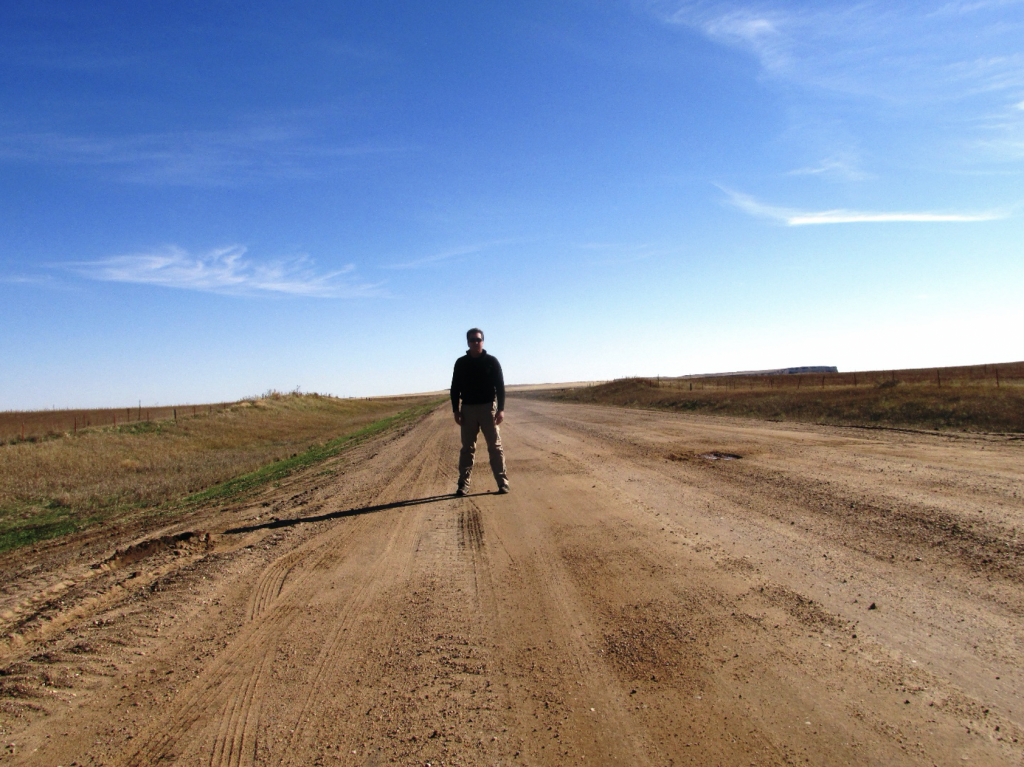“I am a wild, wandering nomad, I belong everywhere and nowhere all at the same time, and in that gap between worlds, I am free.”
—Ritta Klint
I’m fascinated by the nomadic past of the Sioux tribes on the northern plains.
Before the reservation era, the Sioux moved freely across a vast territory stretching from the Missouri River to the Bighorn Mountains. They followed both the seasons and the buffalo, carrying with them everything they owned. The region at the time was boundary-less, void of fences, railroad tracks, or roads. Endless seas of grass surround Paha Sapa (the Black Hills), and each tribe moved through them on foot and horse. Travois were dragged, first by dogs and later horses, leaving a track that could be seen and followed for miles. Thus was the life of a nomadic community.
Over the course of twenty visits to the Pine Ridge Indian Reservation and the surrounding plains, I have often envied (and certainly romanticized) that existence. And in my own modern way I have adopted it when I go there. In a world defined by schedules, appointments, and possessions, I’ve come to love my short interludes as a nomad.

Each time I visit Pine Ridge I conclude with several days of wandering across a region I have come to call “The Land of Crazy Horse.” The territory I’ve explored stretches from Cheyenne, Wyoming, to Billings, Montana, and from Rapid City, South Dakota, to the Bighorn Mountains.
I travel alone and I travel light. I have no agenda (which is an agenda in and of itself), and I prefer not knowing where I will stay when nightfall arrives.
When I’m tired, I sleep. When I wake up, I go. When I’m hungry, I eat. When a trailhead speaks to me, I follow it.
I crank the radio on certain songs. I roll down the windows in snowstorms. I pee on the side of the road.
My possessions are minimal. Blue jeans or hiking pants, wool sweaters and camo Under Armour, a ball cap and a knit hat, gloves, and boots are my uniform. Inside my backpack: bottled water, a small camera, a well-worn journal, an iPhone, my wallet, a rain jacket, and, hopefully, my car keys. That’s it.
On a seldom-used trail, deep in the backcountry of Wind Cave National Park or among the abandoned relics of a fort few remember, I walk both into and with the wind. The grass sways, the dust swirls, the sky evolves, and the buffalo appear, then vanish. When the need to sit overtakes me, I plop down. When ideas manifest, I write. When energy surges, I walk, or even run. There is no pattern, yet it’s all patterned. For that moment, that day, that week . . . I’m a nomad.
* * *
What is it about the nomadic life that pulls me in?
Simplicity.
Spontaneity.
Silence.
Immersion.
Clarity.
Mystery.
Thoughts.
The absence of thoughts.
Freedom.
Fragility.
Immortality.
Connectivity.
Humility.
Immensity.
It’s all there in a single day of nomadic life. The call of the wild. The lure of an empty road. For a moment I am title-less, nameless, and role-less. It’s energizing and grounding.
When I get home, I see better. I hear better. I think more clearly. I’m calmer. I then aspire to hold those energies as long as I can back in the world of sedentary work and repetitive patterns.
I do love my traditional life and roles as a husband, father, CEO, neighbor, and community member. I’m grateful for them all.
But I must admit, I do relish touching periodically the foundational base of all human ancestry. I love, for just a few days each year, being a nomad.
“We preferred our own way of living. We were no expense to the government. All we wanted was peace and to be left alone.”
—Crazy Horse
______
Thank you for considering my thoughts. In return I honor yours. Every voice matters. Nestled between our differences lies our future.
______
This is the thirty-second post in a series of short essays to be posted by Kevin to www.thebusinessofsharedleadership.com in 2021. Kevin is dedicating these writings in honor of Black Elk, the Oglala Sioux holy man who was escorted as a child on a sacred vision quest by the 48 horses of the four directions to visit the six Grandfathers. My horses, prancing they are coming. They will dance; may you behold them. On that journey Black Elk understood the sacred power that dwelled within him and lives within us all. He also recognized that this power could be used for good or bad. Intentional we must be about the path we walk. To invite others to join The Business of Shared Leadership and receive these posts, just pass this link along. The more who join, the deeper the energy field of engagement will become! Thank you!